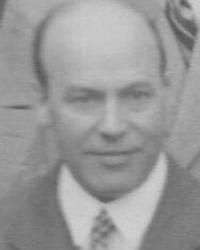Edward Andrade
| Edward Andrade | |
|---|---|
 Edward Andrade, 1934 at London | |
| Born |
Edward Neville da Costa Andrade 27 December 1887 |
| Died | 6 June 1971 (aged 83) |
| Notable awards | Hughes Medal (1958) |
Edward Neville da Costa Andrade FRS[1] (27 December 1887 – 6 June 1971) was an English physicist, writer, and poet. He told The Literary Digest his name was pronounced "as written, i.e., like air raid, with and substituted for air." [2] In the scientific world Andrade is best known for work (with Ernest Rutherford) that first determined the wavelength of a type of gamma radiation, proving it was far higher in energies than X-rays known at the time. In popular culture he was best known for his appearances on The Brains Trust.
Background
Edward Neville Andrade was a Sephardi Jew, and was a descendant of Moses da Costa Andrade (not Moses da Costa as is sometimes stated). da Costa Andrade was his 2nd great grandfather, a feather merchant in London's East End. The surname "Andrade" might nevertheless be of Portuguese origin (see notes on original pronunciation).
Edward Neville studied for a doctorate at the University of Heidelberg and then had a brief but productive spell of research with Ernest Rutherford at Manchester in 1914. They carried out experiments to determine the wavelengths of gamma-rays from radium, and were the first to be able to quantitate these, thereby showing that they were shorter than the wavelengths of then-known X-ray radiation that was produced by "Roentgen tubes".[3][4] He joined the Royal Artillery during the First World War, and then became Professor of Physics at the Ordnance College in Woolwich in 1920.
Career
He was Quain Professor of Physics at University College, London from 1928 to 1950, and then Fullerian Professor of Chemistry at the Royal Institution for three years,[5] until opposition to his attempts to reform the RI led to a vote of no confidence in him by members of the RI, following which he resigned. In 1943 Andrade was invited to deliver the Royal Institution Christmas Lectures on Vibrations and Waves, then in 1950 he developed the lectures further and presented the series on Waves and Vibrations.
Andrade was also a broadcaster, coming to fame during the War on BBC radio's The Brains Trust.[6]
- The Structure of the Atom (1927)
- Engines (1928)
- The Mechanism of Nature (1930)
- Simple Science with Julian Huxley
- More Simple Science (1935) with Julian Huxley
- An Approach to Modern Physics (1956)
- Sir Isaac Newton (1954)
- A Brief History of the Royal Society (1960)
- Physics for the Modern World (1962)
- Rutherford and the Nature of the Atom (1964)
His papers are held by the University of Leicester[7]
References
- ↑ Cottrell, A. (1972). "Edward Neville da Costa Andrade. 1887-1971". Biographical Memoirs of Fellows of the Royal Society. 18: 1–0. doi:10.1098/rsbm.1972.0001.
- ↑ However, the current Andrades pronounce it ‘and-raid'. But, that's an Anglicism from the original Portuguese pronunciation. "Andrade" rhymes with "Comrade" in the original Portuguese. See Charles Earle Funk, What's the Name, Please?, Funk & Wagnalls, 1936.
- ↑ Andrade, E.N. da C. "Personal Reminiscences." http://www.iucr.org/__data/assets/pdf_file/0014/743/andrade.pdf
- ↑ Rutherford, Ernest. "The Natural and Artificial Disintegration of the Elements." The Scientific Monthly, Vol. 19, No. 6 (Dec., 1924), pp. 561-578.
- ↑ Fullerian Professorships
- ↑ New Scientist, 8 June 1961, p.576.
- ↑ University of Leicester(MS 74)
External links
| Wikiquote has quotations related to: Edward Andrade |
- E N da C Andrade: Some Personal Reminiscences (pdf)
- Oral History interview transcript with Edward Andrade 18 December 1962, American Institute of Physics, Niels Bohr Library and Archives